Keynote Speakers
Keynote Speakers

Wenjie Chen
State Key Laboratory of High-end Heavy-load Robots, Midea Group, Foshan, China
Robotics Institute, Midea Group, Foshan, China
Talk Title:
Date & Location:
July 15th 13:30-14:15 (Tuesday), Jade Cong Ballroom AAbstract
Robotized processing in the manufacturing field of high-end industries is facing significant challenges, which pose major demand for heavy-duty robots, especially the substantial enhancement demand for robot accuracy, stiffness and intelligence. To accommodate these demands, systematic design and optimization from core component to transmission chain and robot whole body topology level are necessary. On top of these hardware technologies, AI powered sensing and control shall be taken to further boost accuracy, stiffness, and intelligence in the global processing ability for various applications of robotized high-end manufacturing.
This talk will introduce key technologies of design / optimization and planning / control of heavy-duty robots. The stiffness evaluation criteria and analysis methods are studied with regard to the requirements of stiffness and accuracy improvement. A full-closed-loop forward design simulation platform for mechanical and electrical control integration of heavy-duty robots is developed. Forward design technologies such as hybrid configuration topology, high-rigidity and high-precision transmission chain, design and optimization of the whole body and its core components are carried out. Some breakthroughs of key technologies will be presented such as high-precision trajectory planning and control, vibration suppression and accuracy preservation of robots under heavy-duty complex working conditions. Then, in view of the improvement of robot intelligence in the manufacturing field, research on 3D sensing, AI-based visual perception, planning and control has been conducted. These technologies are well applied in series of robotized intelligent manufacturing fields, such as friction stir welding, gluing, drilling and riveting of large complex shaped parts in the automotive and aerospace manufacturing industries.
Biography
Dr. Wenjie Chen received his M.S. and Ph.D. degrees from the University of California at Berkeley in 2009 and 2012, after obtaining B.Eng. degree from Zhejiang University in 2007, all in Mechanical Engineering. He is now the Executive Deputy Director of State Key Laboratory of High-end Heavy-load Robots in China, and the Director of Robotics Institute at Midea Group, responsible for the overall planning and exploration in the field of robotics and automation technology at Group level. Dr. Chen was also an Adjunct Professor of Practice at the Southern University of Science and Technology of China, as well as an Adjunct Professor at Zhejiang University – University of Illinois at Urbana-Champaign Institute (ZJU-UIUC Institute). Dr. Chen also held several leader positions at FANUC prior to his career in Midea, including Principal Research Engineer at Robotic Lab at FANUC headquarter.
Dr. Chen’s research interests include robotics, automatic control and mechatronics. He has directed or participated in multiple major projects of both frontier research and applied R&D in countries including China, US, and Japan. He has published 68 academic papers in high-level international journals and conferences, including 1 Best Paper Award and 3 Best Paper Award Finalists. He has filed 89 patents in China, US, Japan, and Germany, with 49 granted., Dr. Chen also has served as member of editorial boards of multiple influential international academic conferences and journals, as well as the referee board for several society awards and research grants councils.
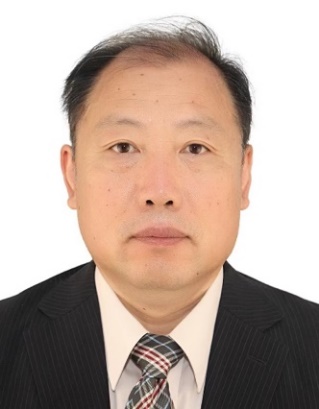
Shijie Guo
School of Mechanical Engineering Hebei University of Technology Tianjin, China
Talk Title:
Date & Location:
July 15th 13:30-14:15 (Tuesday), Jade Cong Ballroom BAbstract
With the acceleration of population aging, the expectations for practical applications of robots in nursing site are rapidly increasing. The development of nursing-care robots has become a hot topic in the field of robotics. At present, most nursing-care robots are single-functional products which are designed only to accomplish a specific task, such as transfer, mobility assistance, meal assistance, bathing, diapering and so on. However, aging leads to multiple declines in physical and cognitive functions. Single-functional products cannot solve the problem of shortage of caregivers since they require manual operation. Therefore, there is an urgent need to develop multifunctional nursing-care robots that serve as both “home helpers” and “family health doctors”. Recently, autonomous humanoid nursing-care robots are garnering significant attentions.
The functions of a nursing-care robot can be divided into three categories: “human operation”, “object operation”, and “tool operation”. Among them, “human operation” tasks include turning over the care receiver who is lying on a bed, cleaning the body, and transfer assist, etc.; “object operation” tasks include grasping and delivering items to the care receiver, organizing daily necessities etc; “tool operation” tasks include water/food/drag feeding, wheelchair pushing, etc. Regardless of the type of operation, operational skills are not simple actions. When people perform fine operations, they generate actions based on vision and adjust the actions based on the feeling of touch. The relative motion and contact force between the human hand and the objects are the two physical items of operation, they are interrelated and intertwined, forming operational skills. How to enable robots to acquire the same operational skills as humans is a key issue. The method of learning from human demonstrations usually only learns the motor skills, but cannot well learn human perception and decision-making ability. This talk will first review the history of single-functional nursing-care robots, and then discuss the core technologies involved in humanoid nursing-care robots and present the recent progresses of our team toward creating multi-functions.
Biography
Prof. Shijie Guo received his doctor degree in mechanical engineering from Tokyo Institute of Technology, Japan, in 1992. He is currently a professor at Hebei University of Technology and a part-time professor at Fudan University, China. He is also the director of the Hebei Key Laboratory of Robot Perception and Human-Robot Interaction as well as the Engineering Research Center of the Ministry of Education of China for Intelligent Rehabilitation Equipment and Physiological Information Detection. He also serves as the deputy director of the Academic Committee of Hebei University of Technology and editor-in-chief of Journal of Hebei University of Technology. He has long been engaged in the research of key technologies and applications of human-interaction robots, including robotic e-skin, electroactive polymer artificial muscles, nursing-care robots, rehabilitation robots, exoskeleton robots, etc. He has published over 200 papers in related fields. The intelligent robot skin tactile sensing system developed by his team was selected as the "Innovation China" pioneer technology by China Association for Science and Technology in 2020. The piggyback transfer robot he developed won the Gold Medal at the 8th China Entrepreneurial Design & Innovation Competition of Elderly Welfare Equipment in 2021. He won the first prize for scientific and technological progress in Hebei Province twice in 2022 and 2024.
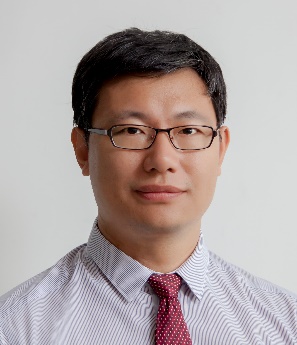
Bing Li
School of Robotics and Advanced Manufacture
Harbin Institute of Technology Shenzhen
Shenzhen, 518055, China
Talk Title:
Date & Location:
July 16th 13:30-14:15 ( Wednesday), Jade Cong Ballroom AAbstract
Research on highly adaptable robots suitable for multiple scenarios, multi-functions and multi-tasks based on robotic reconfiguration technology is a research hotspot in China and abroad. Under the conditions of limited operating space and energy consumption, as well as the green technology innovation requirements under the dual-carbon strategy, traditional robots are very difficult to struggle to meet the complex requirements of diverse and dynamic tasks. Inspired by the principles of biological evolution, the highly adaptive metamorphic robots have emerged. Their cores lie in the ability of a single robotic platform to actively change its structure or its topology, or change of the degrees of freedom of the mechanism, dynamically switching functional modes to adapt to different task scenarios and environmental conditions, thereby achieving multi-functionality on a single robot.
This talk focuses on a key challenge in the field of highly adaptive metamorphic robots: the synthesis and design theory of multiple-metamorphic robotic mechanisms for complex motion sequences. Main research work are summarized as follows: To address the insufficient planar motion flexibility of single-actuator robots, an eccentric-force-driven multi-directional motion transmission technique is proposed, enabling multi-modal switching of the robot through force regulation; From the perspective of configuration design, a configuration library for multiple-metamorphic mechanisms is constructed based on the mechanism decomposition and derivation approaches, providing the basic units achieving multiple functions for the integrated design of metamorphic robots; Using the line graph method and Grassmann line geometry, a type synthesis method for the single-loop metamorphic mechanisms that constructs active and passive constraint branches to generate novel mechanisms is proposed, enabling the development of large-scale deployable platforms for enhanced adaptability and efficiency; Integrating mechanism units with metamorphic origami methods, lightweight metamorphic origami units with large folding ratios is developed. These units can achieve sequential multiple metamorphic unfolding of the mechanism under a single actuation. Based on this unit, a rigid-flexible hybrid deployable support mechanism is designed; Combining a plane-symmetric 7R linkage with origami-kirigami principles, a single-degree-of-freedom deployable polyhedral mechanism was proposed. By performing planar tiling and spatial stacking of these cells, a class of 2D and 3D metamorphic metastructures with programmable and tunable characteristics was designed; To address the issue of smooth multi-modal conversion in mechanisms, a variable-stiffness/variable-damping multi-constrained compliant metamorphic mechanism was proposed. Based on the design concept of multiple-metamorphic mechanisms using rigid-flexible coupling metamorphic units, a prototype of a dual-metamorphic mechanism composed of combined rigid-flexible coupling metamorphic units was designed and manufactured. A systematic theory for the synthesis and design of multiple-metamorphic robotic mechanisms has been established, laying the foundation for the design and potential applications of multiple-metamorphic robots.
Biography
Dr. Bing Li is the Professor and Vice President at the Harbin Institute of Technology Shenzhen. He obtained his Ph.D. from The Hong Kong Polytechnic University. He is a national expert in the field of robotics and has been committed to the research of mechanisms and robotic technology. Has been selected in the National High-level Talents Program, as well as an outstanding alumnus of both Graduate School and Department of Mechanical Engineering of the Hong Kong Polytechnic University and awarded Shenzhen Pengcheng Scholarship. His research interests include Intelligent Morphing Mechnisms and Adaptive Robots, Parallel/Hybrid Kinematic Mechanisms and Robotic-based Manufacturing, Multi-habitat Cross-domain Bionic Robots and Medical Robotics.
Professor Li holds editorial positions including Associate Editor for the international journal IMechE Part C: Journal of Mechanical Engineering Science, Intelligent Service Robotics, and Editorial Board Member for Industrial Robot, Actuators. In recent years, he has chaired organizing program, awards committees etc. for more than 10 international academic conferences. He has delivered more planery/keynote/invited talks at several major international and domestic conferences.
Professor Li has successively presided over and completed more than 30 significant national and local government granted projects, including the key project of intelligent robotics of the national key R&D program, the joint fund of national natural science foundation, as well as the Guangdong provincial key aeas of R&D program etc. He has published more than 150 SCI refereed research papers on international journals such as NC, TRO, Soft Robotics etc., Four papers have received Best Paper Awards at international conferences. He holds more than 60 authorized invention patents of China, and published 3 books in Chinese. His research achievements has won the second prize of the national technology invention award, and won four science and technology awards in the provincial level.
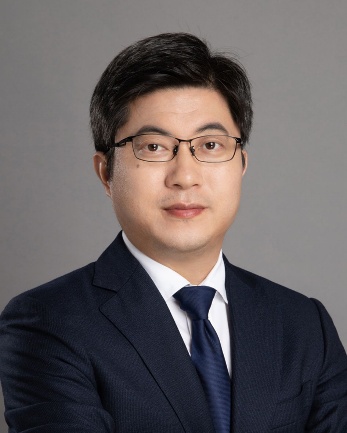
Guoying Gu
School of Mechanical Engineering
Shanghai Jiao Tong University
Shanghai 200240, China
Talk Title:
Date & Location:
July 16th 13:30-14:15 ( Wednesday), Jade Cong Ballroom BAbstract
Designing robotic hands to replicate the embodied dexterity of human hands has been a long-term pursuit in robotics, aiming to achieve both active high mobility and passive adaptivity. This pursuit poses critical challenges, as designers must balance multiple functionality factors including degrees of freedom (DoF), kinematics, interactive contact, and system cost. The traditional approach primarily addresses active high mobility, using exquisite rigid material mechanisms to implement controllable multi-DoF mobilities within a limited compact space. However, the inherent rigid constraints imposed by these mechanisms often increase the complexity of design, fabrication, and control, potentially limiting the adaptivity of robotic hands.
Soft robotics, which employs low-modulus materials and compliant structures to build robotic functions, has emerged as a promising candidate to address this challenge. This cutting-edge technology has enabled robotic hands to achieve high dexterity and versatility while maintaining the simplicity of structure and control. In this talk, I will introduce our recent development on soft robotics with new actuation, sensing and hand mechanisms. Besides, I will also showcase some soft robotic systems for delicate and dexterous manipulation, in particular, in the context of wearable applications.
Biography
Guoying Gu is a Professor of School of Mechanical Engineering, Shanghai Jiao Tong University, China. He was a Humboldt Fellow with University of Oldenburg, Germany. He was a Visiting Scholar at Massachusetts Institute of Technology, National University of Singapore and Concordia University. His research interests include soft robotics, bioinspired and wearable robots, smart materials sensing, actuation and motion control. He has authored or coauthored more than 150 publications, which have appeared in Science Robotics, Nature Biomedical Engineering, Nature Reviews Materials, Nature Materials, Nature Communications, Science Advances, IEEE/ASME Transactions, Advanced Materials, Soft Robotics, Science China serials etc., as book chapters and in conference proceedings.
Dr. Gu was the recipient of the National Science Fund for Distinguished Young Scholars and the XPLORER PRIZE. He is currently an Associate Editor for Soft Robotics and was an Associate Editor for IEEE TRANSACTIONS ON ROBOTICS and IEEE ROBOTICS AND AUTOMATION LETTERS. He has also served for several journals as Editorial Board Member, Topic Editor, or Guest Editor, and several international conferences/symposiums as Chair, Co-Chair, Associate Editor, or Program Committee Member.
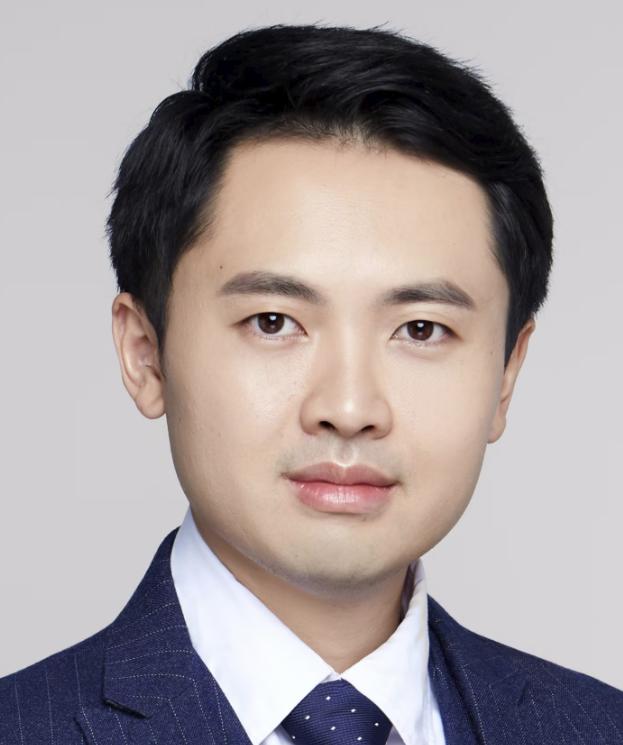
Tiefeng Li
Center for X-Mechanics
Zhejiang University
38 Zheda Road, 310027, Hangzhou, China
Talk Title:
Date & Location:
July 17th 09:00-09:45 (Thursday), Jade Cong Ballroom AAbstract
Robots for extreme environments and complex task are challenged in both the mechanical and electronic systems. Natural creatures may inspire the soft material and system design for excellent adaptability and multi-functions. This talk focuses on the interdisciplinary research between mechanics and soft robotic system. The design theory of soft robot intelligent system is developed, as well as its manufacturing and application methods. The method of stress regulation and underwater actuation of the soft smart structure, giving the electric-driven soft robot system excellent features such as fast response and full transparency. Put forward the principle and control method of soft robot system adapting the deep sea pressure. Inspired by the structure of a deep-sea snailfsh, we develop an untethered soft robot for deep-sea exploration, with onboard power, control and actuation protected from pressure by integrating electronics in a soft matrix. For the first time, the soft robotic fish operate in the Mariana Trench at the depth of 10900 m and free swim in the South China Sea at the depth of 3224 m.
Hydrogels consist of cross-linked polymers that are highly swollen with water. Water evaporation orfreezing during temperature changes may lead to stiff and brittle hydrogels. We introduce a strategycalled “hydro-locking,” which involves immobilizing the water molecules within the polymer networkof the hydrogel. A sacrificial network is introduced to shield the prime polymer network from collapsing. Under the hydro-locking mode, an alginate-polyacrylamide double-network hydrogel remains soft and stretchable within a temperature range that spans from –115° to 143°C. Thestrategy works with a range of hydrogels and solutions and may enable the preservation and observation.
Biography
Tiefeng Li, Professor in X mechanics center, Zhejiang University. His research focuses on the soft matter mechanics, soft robot and bio-inspired robot. He has published over 50 SCI papers including 1 Nature cover paper and 1 Science paper, and received the NSFC Distinguished Young Scientists Fund, the 26th China Youth May Fourth Medal, the first Xplorer Prize (Frontier and interdisciplinary research), and MIT TR35 China,the research work has been elected as one of the“China Top 10 scientific advances”.
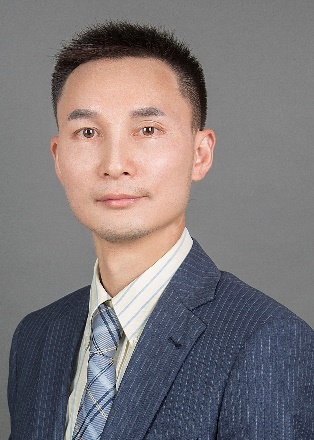
Bo Tao
School of Mechanical Science and Engineering
Huazhong University of Science and Technology, China
Talk Title:
Date & Location:
July 17th 09:00-09:45 (Thursday), Jade Cong Ballroom BAbstract
Large and complex components are widely used in the field of aerospace, energy and rail transportation and so on. Since the accuracy and surface roughness of the free-form surfaces are essential for improving the air or hydrodynamic performance of the components, it is important to perform the advanced machining technology to realize the high precision and surface quality manufacturing. The key issue in the processing of large and complex components lies on the high positional accuracy requirement and the surface quality control during processing. Compared with the CNC machining, mobile robots have the advantages of high flexibility, large working space, environmental adaptability and parallel coordination. Therefore, mobile robots can be used as the execution of manufacturing equipment. By taking advantage of the flexibility of robots, and digitalizing the work experience into robotic system, it is possible to make the robot as a tireless "skillful craftsman". This provides a new solution for the large and complex components manufacture. This report will combine my research in the field of robotized intelligent manufacturing, and share the research and application experiences of our research team in the field of the robotic mobile processing for large-scale complex components, especially the research progress in the field of adsorption mobile processing robots, which recently won the 2024 Best Paper Award of IEEE/ASME Transactions on Mechatronics.
Biography
Dr. Bo Tao is a Distinguished Professor at the School of Mechanical Science and Engineering, Huazhong University of Science and Technology (HUST). He received the B.S. and Ph.D. degrees in mechanical engineering from HUST in 1999 and 2007 respectively. After being a post-doctor from June 2007 to June 2009, he has been an associate professor in 2009 and a professor in 2013 in HUST. From June 2013 to June 2014, he was a visiting scholar at the Mechanical Engineering Department of UC Berkeley, USA. He is currently the Secretary General of the robot branch of Chinese Mechanical Engineering Society, and the Secretary General of the tri-co robot branch of Chinese Association of Automation. He has published 2 monograph, more than 100 papers in international journals and conference. He has won the second prize of national scientific and technological progress award, the second prize of National Technological Invention Award, and has been authorized more than 50 national invention patents of China. His research interests mainly include intelligent manufacturing and robotics technologies.